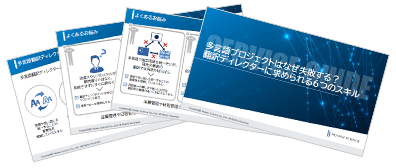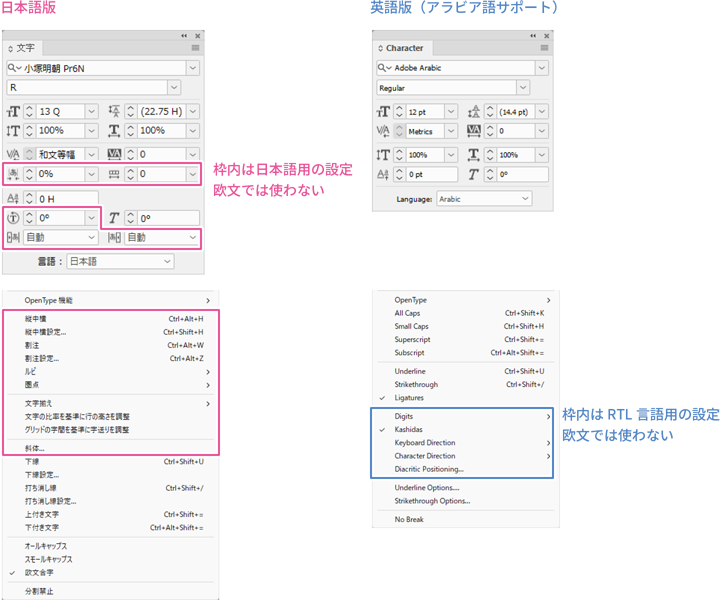
English is widely considered to be the most important language for global business, according to sources ranging from Rosetta Stone to Harvard Business Review. As such, it often serves as a bridge between markets spanning all corners of the world. If the original text of a document is not already in English, translation from the local language into English itself can be enough to branch out into the global business market. But additionally, when aiming to produce highly accessible materials in specifically targeted regions across the world, English often serves as the jumping off point for translation into a multitude of other languages as well.
Unfortunately, there are some quirks of the English language and certain document structures that can create unnecessary hurdles when trying to translate from English into other languages, regardless of whether you are relying on a human translator or an automated machine translation engine. These issues can slow down the translation process and, in worst-case scenarios, lead to mistranslations or borderline nonsensical text outputs. To help avoid these issues, one can implement the process of pre-editing, wherein the original text is adjusted to optimize it for quick and straightforward translation. In this post, I’ll be explaining the importance of pre-editing by showing examples of how certain quirks of English may be difficult for translators or the tools that they rely on to handle.
1. Extra-long sentences
In contrast to some other world languages, English does not have a super strict sentence structure or a consistent system of particles and other grammatical indicators. The language is highly flexible. While the most basic sentence formula puts the subject at the beginning, verb in the middle, and direct objects toward the end, additional information in the form of phrases, adverbs, and so on can push and pull at this general structure and extend a sentence to staggering lengths.
As a general rule, prepositional phrases, adverbs, and other extra descriptors modify whichever noun or verb is closest to them, but as strings of phrases become increasingly long and more information is crammed into each and every sentence, descriptions may be distanced from their targets, making the sentences difficult to parse. For certain types of prose aimed at an English-speaking audience, this style of writing may be perfectly engaging and effective, but when the purpose of the English text is to be translated, long and complex sentences can be daunting and become a source of mistakes. Often, information will end up misappropriated, unduly repeated, or missing altogether.
To fix this, simply break up long sentences into multiple smaller sentences. Humans and machine translation engines alike tend to consider translations one sentence at a time, and by ensuring that the English source material is composed of segments that are short and direct, the likelihood of information getting scrambled or forgotten is greatly diminished.
2. An abundance of pronouns
Stylistically, English has an aversion to repetitious words and phrasing. Subsequently, it has a heavy reliance on the use of pronouns, rather than using the same nouns or names over and over. Linguistically, this is not an issue and is usually easy for an English-speaking audience to understand, but when the English text is simply the starting point for multi-lingual translations, an overabundance of pronouns can cause some problems.
As with the positioning of phrases in an English sentence structure, pronouns usually describe the closest relevant antecedent. Therefore, if other relevant nouns appear between the pronoun and the noun that it is meant to describe or if many pronouns are used in long succession, the likelihood of misunderstanding goes up. Consider the following example:
Do not force the plug into the slot at an angle. It may break.
What may break? The plug or the slot? Perhaps the device in general? Depending on the larger context, the translator could make a guess, or they might need to contact the English writer for clarification.
This problem is amplified when translation is handled by a machine translation engine, which translates each sentence independently. This means that if the noun that a pronoun is replacing appeared in an earlier sentence, then the translation engine is incapable of recalling that information and assigning the proper meaning to that pronoun.
To avoid such issues, an editor can preemptively replace all or most pronouns in a document with the nouns that they represent.
3. Inconsistent terminology
English is a very nuanced language. The dictionary contains a plethora of words that mean almost the same thing and can be used more-or-less interchangeably. For the sake of avoiding repetition and redundancy, an English writer may use various synonyms when writing about a topic for an English audience, but for the sake of translation, this can actually lead to some undue complexity.
For example, if an English document is describing the shape and features of a monitor, but after a few lines, the text instead mentions the “screen,” a translator might reasonably wonder if this is a new display device, separate from the monitor, or perhaps refers to only the display portion of the monitor device. If the translator subsequently creates a distinction between ‘monitor’ and ‘screen’ where none was intended, this may lead to mistranslation.
Thankfully, the benefits of changing the text to use more consistent terminology can also be more economical in the long run. Many modern translators use computer assisted translation (CAT) tools, which register translated lines of text to a “translation memory” for future reference. So, if sentences that share a similar purpose are worded similarly and use the same phrases and sentence structure, the previously approved translations can be loaded automatically from the memory, thereby reducing the workload and costs.
For more information on how CAT tools benefit the translation process, check out the blog What Are the Benefits of Computer Assisted Translation (CAT) Tools.
4. Unnecessary line breaks
In addition to the points above, pre-editing should also take into account the layout of the source document and how the organization of information on the page can affect the process of translation. In particular, unnecessary line breaks can become a major issue when translating from English into other languages.
When a translator utilizes a CAT tool or when a machine translation engine in used, translation source data is automatically broken up into segments according to the punctuation and other characters that appear in the text. Generally, line breaks indicate the end of a sentence or idea, so these tools are programmed to start a new segment at every line break. Therefore, if line breaks are entered into the middle of sentences for the purpose of controlling the layout, those sentences get split up across multiple translation segments. This can create a number of problems for the translator.
Take a look at the following example where, instead of utilizing text boxes or tables with text wrap, spaces and line breaks are used to create two columns of text:
Jack and Jill ran Twinkle, twinkle
up the hill to fetch little star. How I
a pail of water. wonder what you are.
Now, here is how those lines would be segmented by a CAT tool or MT engine:
| 1 | Jack and Jill ran Twinkle, twinkle |
|---|---|
| 2 | up the hill to fetch little star. |
| 3 | How I |
| 4 | a pail of water. |
| 5 | wonder what you are. |
Not only is the information of each sentence split across multiple segments, it is also jumbled and intermingled. For a human translator, this result is unintuitive at best. But to make matters worse, many languages arrange the parts of their sentences in an order that differs from English syntax. Information that appears at the beginning or middle of an English sentence may appear at the end of some other language. Therefore, if one sentence is split across multiple segments, in order to formulate a sentence that makes sense and sounds natural in the target language, information from later segments may need to be shifted upward and paired with English words that mean entirely different things. Then, because translation memories are saved in units of segments, this necessary rearrangement creates a translation memory of source text paired with registered translations where the meanings of the words contained do not actually match and therefore cannot be utilized for future translations.
For machine translation, this problem of improper segmentation based on unnecessary line breaks is much bigger, because most modern MT engines are not programmed to draw context from the surrounding segments. Therefore, the MT engine will translate the text of each segment individually, exactly as it appears, without acknowledging that the sentence continues in subsequent segments. Unlike human translators, MT engines lack that intuition. And undoubtedly, this will lead to mistranslations.
To prevent this issue, a pre-editor should ensure that no line breaks appear in the middle of sentences, even at the expense of the layout. Because different languages vary in length, the layout of the translated text will need to be adjusted regardless of how nice or ugly the source document appears. Thankfully, this process of adjusting the translated page layout is also easier to perform when the sentences are consolidated into one line to start with, so changing the layout in pre-editing does not create more work down the line, and does a lot of good for the translator.
As a side note, depending on the segmentation settings, colons or other symbols may also cause unwanted line breaks. If this happens, either the text should be adjusted, or the segmentation settings of the CAT tool should be changed to minimize the issue.
Conclusion
The purpose of pre-editing is to minimize mistakes in multi-lingual translations by brushing up the quality of the English source text. The items above are some of the most easily identified points of contention, where pre-editing is practically guaranteed to positively impact the quality of the final translation. Other edits for dealing with unclear phrasing, ambiguous grammar structures, and other less distinct areas for improvement can still be useful, but the points above are what might be considered the bare minimum for successful pre-editing.
It’s worth noting that an English document produced for consumption by an English-speaking audience, compared to a document that has been optimized for translation though pre-editing, will likely have a number of differences. The file for translation may come across as more stilted, repetitive, and aesthetically unappealing compared to the file intended for English-speaking readers. But this is not a problem, because in this case, the English is not the final product. By producing an English document that is easy for tools to parse and for translators to digest, the meaning of the text can be absorbed and transformed by the translator more easily and accurately.
In contrast, if a document sounds great in English but utilizes a style of writing or formatting that is more difficult to translate into other languages, the quality of the final translated product may suffer. Therefore, by investing in the quality control that pre-editing provides, the translation process runs more smoothly and the results are more reliable.
For more detailed tips on specific grammar structures that should be avoided to improve readability for non-native English speakers, including some translators, check out How to Adjust Your Writing for a Global Audience.


























